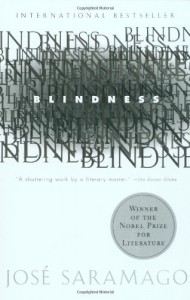Eccentric Musings (jakaEM)
"I have undergone sharp discipline which has taught me wisdom; and then, I have read more than you would fancy." Emily Brontë
still figuring this place out - Jen W
25
followers
25
following
Currently reading

Friend of My Youth
Progress:
115/288 pages

Survival: A Thematic Guide to Canadian Literature
 This was my first experience with José Saramago, who won a Nobel Prize for Literature for this novel, a harrowing journey to the depths of human depravity–and human goodness–in the aftermath of societal breakdown.
This was my first experience with José Saramago, who won a Nobel Prize for Literature for this novel, a harrowing journey to the depths of human depravity–and human goodness–in the aftermath of societal breakdown. The uniting metaphor of "the white blindness," which quickly afflicts all but the central protagonist (the doctor’s wife), is a metaphor for many different things, and what the reader brings to this is almost as important as what s/he takes away from it. Very, very similar in tone, content and pace, and even in the final uplift at the end, as Cormac McCarthy’s The Road.
The writing style is the first, most obvious feature that bears examination: embedded dialogue within long, unpunctuated paragraphs of text mimics thought more than speech. This technique serves to blur the distance between characters, and between descriptions of external events versus the internal response to them. The theme of interdependency among people brought together by a tragedy to which they are all susceptible is underscored forcefully by the writing style.
Despite the unique style, this novel is easy to read, if not an easy read. The pace is quick, and while there are distinct plot points that are central to the story unfolding, these are secondary to the psychological reality of the lives of the characters, and to their positions almost as archetypes in the story. It is not important what has happened to them, or why, but simply that it has happened and what effect it has on the human capacity for thinking, feeling and behaving in such circumstances, individually and collectively.
The book raises more questions than it answers, which is of course key to its power as a novel. Two weeks later, and I am still thinking about some of these images and metaphors.
Provocative, chilling, ultimately redemptive.


